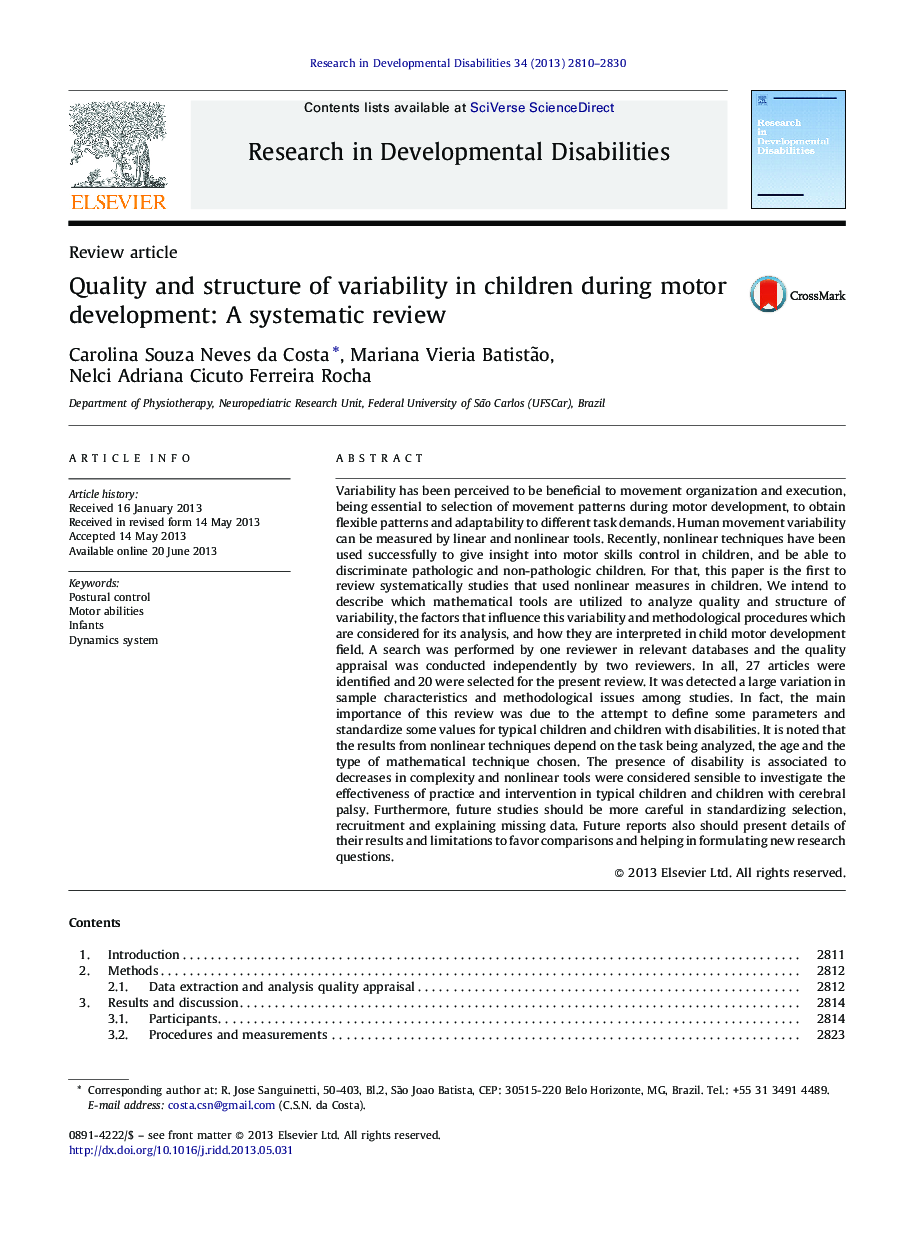| Article ID | Journal | Published Year | Pages | File Type |
|---|---|---|---|---|
| 10317768 | Research in Developmental Disabilities | 2013 | 21 Pages |
Abstract
Variability has been perceived to be beneficial to movement organization and execution, being essential to selection of movement patterns during motor development, to obtain flexible patterns and adaptability to different task demands. Human movement variability can be measured by linear and nonlinear tools. Recently, nonlinear techniques have been used successfully to give insight into motor skills control in children, and be able to discriminate pathologic and non-pathologic children. For that, this paper is the first to review systematically studies that used nonlinear measures in children. We intend to describe which mathematical tools are utilized to analyze quality and structure of variability, the factors that influence this variability and methodological procedures which are considered for its analysis, and how they are interpreted in child motor development field. A search was performed by one reviewer in relevant databases and the quality appraisal was conducted independently by two reviewers. In all, 27 articles were identified and 20 were selected for the present review. It was detected a large variation in sample characteristics and methodological issues among studies. In fact, the main importance of this review was due to the attempt to define some parameters and standardize some values for typical children and children with disabilities. It is noted that the results from nonlinear techniques depend on the task being analyzed, the age and the type of mathematical technique chosen. The presence of disability is associated to decreases in complexity and nonlinear tools were considered sensible to investigate the effectiveness of practice and intervention in typical children and children with cerebral palsy. Furthermore, future studies should be more careful in standardizing selection, recruitment and explaining missing data. Future reports also should present details of their results and limitations to favor comparisons and helping in formulating new research questions.
Related Topics
Life Sciences
Neuroscience
Behavioral Neuroscience
Authors
Carolina Souza Neves da Costa, Mariana Vieria Batistão, Nelci Adriana Cicuto Ferreira Rocha,
